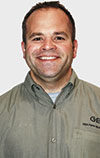Is upgrading your clean-in-place (CIP) system on your to-do list? If not, maybe it should be. The importance of an effective CIP system can’t be stressed enough. Properly cleaned milking equipment is essential to keeping low bacteria counts and maintaining milk quality.
And don’t stick with the same old, same old. New improvements in cleaning products, temperature monitoring and programmable washers can help save you time and improve cleaning performance.
Time is money
Newly formulated, one-step chemical cleaners cut down the length of time needed for the wash cycle, saving time, money and water. A traditional wash cycle involves four steps:
- Pre-wash rinse removes up to 98 percent of the soil load.
- Wash cycle uses a chlorinated alkaline cleaner to remove milkfat, protein and minerals.
- Acid rinse removes detergent residue and minerals while inhibiting bacteria growth.
- Sanitize cycle provides a pre-milking check to kill any remaining bacteria.
In comparison, one-step cleaners are specially formulated to remove minerals as well as emulsify fats and peptize proteins. Unlike traditional alkaline detergents, one-step products are acid-based.
The wash and acid rinse cycles are combined into an easy one-step wash process that can cut 10 to 15 minutes from each wash cycle. For farms washing three times a day, a savings of 30 to 45 minutes per day can be realized.
On average, farmers can reduce their water by 25 to 33 percent per washing. The reduction in water also helps to reduce your environmental impact and waste-hauling costs.
A pre-wash rinse is still needed to remove dirt and soil from your milking equipment. It’s also recommended to run a maintenance wash, with all four steps, one to two times a month.
Deep cleaning
Stubborn soil and bacteria sometimes need a stronger product to be removed effectively from milking equipment. New acid-based products on the market are designed to remove teat sealants and other hard-to-clean products that could be left behind with traditional cleaners.
These products can be used in addition to your traditional cleaners or implemented into your one-step cleaning system as a hot acid cycle.
You can also look at upgrading your traditional acid cleaner. Peracetic acid sanitizers are the new generation of acid sanitizers. These products are incredible oxidizers, removing and preventing biofilms, killing bacteria and keeping your preliminary incubation and lab pasteurized counts down.
Added temperature control
With improvements in automation, added control is available for temperature monitoring. CIP systems with the option of built-in temperature monitoring let you set controls for minimum wash temperature.
If the washwater temperature is too low, butterfat starts to fall out of suspension and gets left behind in the milking equipment and pipeline. If washwater temperature doesn’t meet requirements, the system will automatically respond and alert you to the issue.
Automation enhancements
With programmable washers, you can set your wash requirements and have everything happen automatically, saving you time and giving you consistency.
Setting times for each wash cycle, programming monthly maintenance washes and selecting a pre-rinse product to be added are all options you can control with a push of a button.
Programmable washers also allow you additional flexibility down the road. If you want to change your wash cycle time, switch to one-step cleaners or increase the number of maintenance washes, your system is ready to handle these changes with minimum stress.
Automation means producers have fewer steps they need to operate on a daily basis. However, this doesn’t mean you can set it and forget it. For each wash cycle, check to make sure everything is running correctly and following the six requirements of cleaning: time, temperature, water volume, chemical balance, velocity and drainage. You should also remember to schedule maintenance before failure to ensure your equipment is properly running.
Work with your hygiene specialists to ensure you are getting the most from your cleaning and sanitation system to save time and maintain milk quality. ![]()
PHOTO: A new generation of chemical cleaners can save you time and improve cleaning performance. Courtesy photo.

-
Keith Engel
- Dairy Farm Hygiene and Supplies Specialist
- GEA
- Email Keith Engel






